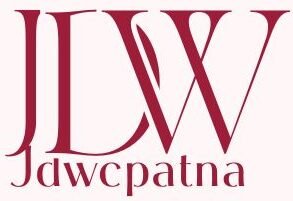This is Bicentennial Quarter, a quarter minted in 1975 and 1976 especially to mark the 200th anniversary of the United States from the miles and miles of American currency. Besides being different from both ways used in minting and the years used in minting, this quarter earned special attention from various collectors and investors around the world, who were probably about the worth of such a coin.
This article talks about the different aspects of the Bicentennial Quarter, from its early history, market value with respect to investment potential, and much more collector-tips for investing or collecting.
HISTORY OF THE BICENTENNIAL QUARTER
Minting Background: The U.S. Mint produced over 1.6 billion Bicentennial Quarters across three locations: Philadelphia, Denver, and San Francisco.
The minting of these quarters was to be a part of the larger scheme of the country to commemorate the bicentennial of the nation and to promote the collecting and use of coins by the public.

Design Features: The Bicentennial Quarter has an entirely unique reverse design made by artist Jack AR, the colonial drummer boy. The obverse bears the classical portrait of George Washington.
This coupled with the dual date “1776-1976” is the 200th anniversary of the Declaration of Independence.
CURRENT MARKET VALUE:
General Value: Most circulated Bicentennial Quarters are worth their face value of 25 cents. Uncirculated or proof versions can command much higher prices, however.
Uncirculated coins sell for $1 to $5, while proof coins are priced $10 or more, depending on their condition.
Rare Varieties: Some varieties of the Bicentennial Quarter are extremely valuable. The 1976-S Silver Proof Quarter, made for collectors, is 90 percent silver and can command considerably more, generally $10 to $20, depending on condition.
Additionally, the 1976-D Doubled Die Quarter, in which significant doubling of design elements is evident, can bring between hundreds or thousands of dollars, trading at auction.
INVESTMENT POTENTIAL
Market Trends: The rare-coin market, with the Bicentennial Quarter, has seen renewed interest in the past couple of years.
It’s sparking interest in a growing community of coin enthusiasts who are buying, selling, trading, and talking about coins online and on social media.
Investment Considerations: Other than most common coins found in circulation, some might have found a mint error or in great looking shape that can make good money.
Collectors may encounter a lot more high-mintage, poorly priced-below-premium coins. Focus then would be on getting the best you can, but realize the cost involved with grading and certification.
COLLECTING ADVICE
Check your coins: When checking your Bicentennial Quarters, consider key points for determining the mint marks. Mint marks are found with “S” for the San Francisco Mint and “D” for the Denver Mint.
Learn: Understanding coin grading is very important for a collector. Coins are graded on a scale from 1 to 70 with 70 being the best possible condition. Learn the grading process and the elements that render particular Bicentennial Quarters valuable.
Buy from well-known dealers: In this field, you need to depend on recognized numismatic dealers or trusted sites on the internet for authentic coins. Look for dealers who are members of professional organizations such as the American Numismatic Association (ANA).
Collecting Communities: Here, rub elbows with fellow collectors that get you those juicy nuggets of insight and opportunity. Great forums, social media groups, and local coin clubs are for everyone to learn more about market opportunities and network with enthusiasts.
RARE VARIETIES AND ERRORS
- Doubled Die Error: One of the most prized varieties is the 1976-D Doubled Die Quarter.
- This means that a coin strikes twice, making all of its design features double. Collectors seek after, purchase, and place these coins in their collections because of their sparseness and unusual look.
- Silver Proof Quarters: The 1976-S Silver Proof Quarter is another highly collectible coin. Only for the collectors, these coins contain 90 percent silver, appealing to investors.

Current value will consequently fluctuate with the price of that precious metal; however, they are usually traded above face value.
MARKET DEMAND AND TRENDS
Growing Attraction: As the U.S. goes closer to its 250th-anniversary celebration in 2026, so will Bicentennial memorabilia become all the more desirable.
Collectors may well want to stockpile these quarters in time for future appreciation based on the historical significance and heritage associated with them.
Online Auctions and Sales: Thanks to online auction sites, it is now easier than ever for collectors to trade coins.
Examples of these include websites like eBay and many other specialized numismatic sites that connect enthusiasts with collections and others looking for a specific rare variety.
Bicentennial Quarter worth
The Bicentennial Quarter is one more piece of coin that stands for the history of the American nation. Most circulated quarters do, however, measure just value to the extent of their face value.
Collectors should keep their eyes peeled for rare varieties and errors that can appreciate to value exponentially.
As the interest in numismatics is elevated further by the anniversary celebrations, markets for the Bicentennial Quarters seem poised to grow.
While for enjoying personal vanity in such quarters or as investments, they give an interesting view of early America and a historical perspective to value.
FAQS:
Is there really a good reason for the Bicentennial Quarter to carry such great values?
Rarity with specific mint errors or variations is what the market really offers in terms of demand for these coins, while collectors are rightfully willing to pay up to $110 million for them. Any flaws in minting or limited production runs might lend to the value of a coin entirely.
How do I know whether my Bicentennial Quarter is worth the $110 million?
In terms of assessing whether a Bicentennial Quarter is worth millions, look for such things as minting errors, rare variations, or odd marks which are typically associated with high-value coins.


